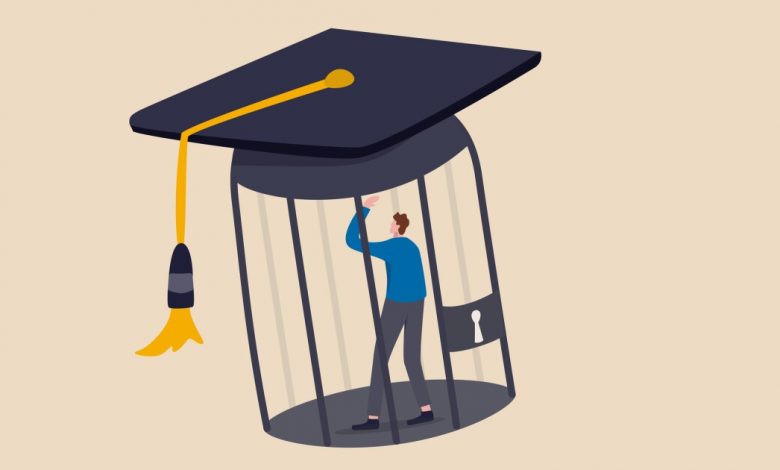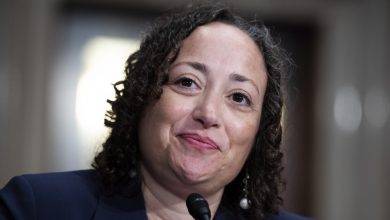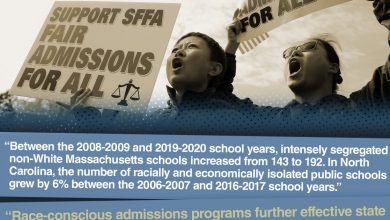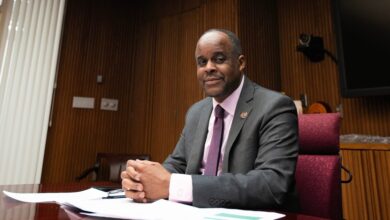Under Proposal, More Nontenured Faculty Members Would Qualify for Loan Forgiveness. Here’s How.

[ad_1]
More contingent faculty members would qualify to have their federal student loans forgiven under changes the Biden administration has proposed in the Public Service Loan Forgiveness Program. The federal program, which offers student-loan forgiveness to public-service employees who have made loan payments for at least 10 years, has been widely criticized as overly complex and poorly administered, with very few borrowers succeeding in having their debt forgiven.
If approved, one change would allow contingent faculty members — part-time and full-time instructors who aren’t on the tenure track, including adjuncts — to qualify for the program by working at least 30 hours a week for qualified employers, including public and nonprofit colleges. Currently, employers may define full-time work differently; the proposed change would not affect employers’ definitions for purposes beyond the loan-forgiveness program.
Another proposed change is intended to help the many contingent faculty members who are paid according to the number of credits they teach. Under that change, the instructors would be able to translate credit hours taught to total hours worked by multiplying the number of credit hours by 3.35; the change would acknowledge that an hour of instruction in the classroom requires additional work, such as preparation time, office hours, meetings, and training.
“This is going to really help a lot of families,” said Winston Berkman-Breen, deputy director of advocacy and policy counsel at the Student Borrower Protection Center, a national nonprofit group focused on alleviating the burden of student-loan debt.
A report released this year by the American Federation of Teachers, based on a survey conducted in 2020, painted a grim picture of life for the growing number of contingent faculty members nationwide. One-quarter of respondents said they earned less than $25,000 annually, and only one in five said they could comfortably cover basic monthly expenses. Nearly half said they struggled with job security, reporting that they didn’t know until one month before the start of an academic year if they would have a teaching job. According to the AFT, 75 percent of faculty members are not eligible for tenure and 47 percent hold part-time positions.
The proposed changes in the Public Service Loan Forgiveness Program echo state laws in California, Oregon, and Washington that determine how faculty members can calculate total hours worked based on hours of classroom instruction. A similar bill has passed New York’s Legislature and awaits the governor’s signature.
Student loans are one of the real burdens of adjunct life, adjunct work, which is work that is inherently underpaid and that isn’t recognized as full-time work for the purposes of job security or benefits.
Changes to reflect the time faculty members spend working outside the classroom would be “incredibly significant,” said Rosa Squillacote, vice president for part-time employees at the Professional Staff Congress, the union for faculty and staff members at the City University of New York. “Anecdotally, student loans are one of the real burdens of adjunct life, adjunct work, which is work that is inherently underpaid and that isn’t recognized as full-time work for the purposes of job security or benefits,” she said.
Squillacote, who has worked at CUNY’s Hunter College and John Jay College of Criminal Justice for 10 years, teaching a full-time load about half that time, said qualifying for the loan-forgiveness program would give her a realistic way to pay off the $200,000 in student loans she racked up during law school. “This relief, in my opinion, doesn’t go far enough, but it’s really needed intervention or support for like an entire generation of people that have lived in this financially precarious life literally forever,” Squillacote said.
Daniel A. Collier, an assistant professor of higher and adult education at the University of Memphis, said he favored the proposed changes, which he said would help clarify and simplify the loan-forgiveness program. But he also wondered if the changes could give administrators incentives “to use adjuncts more and not replenish tenure-track lines.”
“If we see the pool of adjuncts open up,” Collier asked, “why would any administrator have to replenish any teaching roles with tenure-track faculty, who cost much more money?”
Electoral Implications
In addition to those changes in the Public Service Loan Forgiveness Program, the Education Department has proposed allowing more types of payments as well as certain kinds of deferments and forbearances to qualify for the program. The department has also proposed creating a formal reconsideration process for borrowers whose applications are denied.
The changes are among several the Biden administration unveiled this month to clear the path to loan forgiveness for borrowers falling into a number of different categories. The department is in the middle of a 30-day comment period on the proposals, and plans to publish final rules this fall that would take effect by next July.
Under President Biden, the department has taken a targeted approach to expanding student-loan forgiveness. Thus far it has approved the discharge of about $26 billion in federal student-loan debt for more than 1.3 million borrowers, including borrowers who attended the now-defunct Corinthian Colleges and those with permanent disabilities.
But on the campaign trail in 2020, Biden committed to tackling student-loan forgiveness more broadly, pledging to cancel at least $10,000 in debt for each federal student-loan borrower and promising to forgive undergraduate tuition debt incurred at public colleges and universities, historically Black colleges and universities, and other minority-serving institutions for those earning up to $125,000 a year. Critics on the right have argued that universal loan forgiveness would be unfair to those who did not attend college, did not take out student loans, or have already paid them off. Some on the left have argued either that universal loan forgiveness would not focus on helping those who need relief the most or that $10,000 in forgiveness would not go far enough. Some have expressed concerns that canceling student debt could worsen inflation.
Meanwhile, those with federal student loans are anxiously awaiting a decision on whether payments, which have been paused since the start of the pandemic, will resume on September 1, as scheduled, or whether the pause may be extended again. In addition, a previous expansion of the Public Service Loan Forgiveness Program is set to expire on October 31. With both dates falling so close to the midterm elections, any decision on student debt will be followed closely for its political impact.
[ad_2]
Source link






